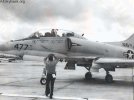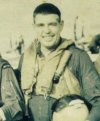Pushover vs inverted positive pull isn't ALWAYS the choice to make. Maybe in a hornet with such high thrust, but in other airframes that rely on the lift vector much more, all it takes is reducing the net lift vector.
For example: underslung rotorhead of the two-bladed systems in vietnam caused mast-bumping for guys trying to pushover to get back into the TERF environment, so instead (since they can't go inverted, and their lift vector is very sensitive), they simply rolled it over to high AOB, dropping off the lift vector, causing a high descent rate, while pulling a decent positive G, accomplishing their quick descent back into the TERF environment while maintaining positive loading on the rotor system and no positive pushover.



 ~
~ 
 BTW, "negative g" IS pushover...and per previous posts, it doesn't do it for us either.
BTW, "negative g" IS pushover...and per previous posts, it doesn't do it for us either.



